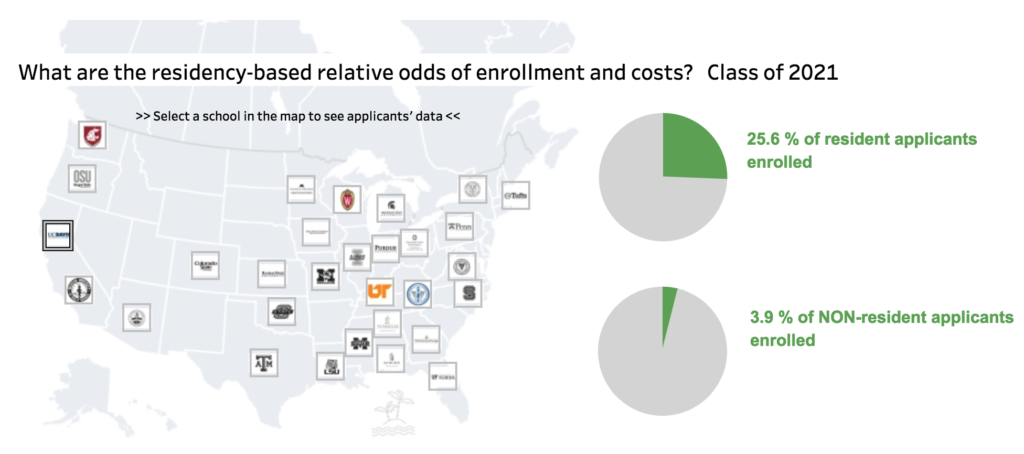Acceptance numbers matter
- Colorado State University College of Veterinary Medicine and Biomedical Sciences (2,153 applications for 148 seats)
- Virginia-Maryland Regional College of Veterinary Medicine (1,607 applicants for 128 seats)
- Washington State University College of Veterinary Medicine (1,448 applications for 133 seats)
- Ohio State University College of Veterinary Medicine (1,321 applications for 161 seats)
- University of Wisconsin – Madison School of Veterinary Medicine (1,309 applications for 96 seats)
Want to increase your chances of getting into veterinary school?
Apply Smarter
Increasing your odds of getting into veterinary school by paying attention to residency status can also decrease your potential costs: Win-Win! Not only will you have better odds of being admitted into a state school if you apply as a resident of that state, in-state costs can be 2-3x less than out-of-state. You may not care much about costs while you’re applying, but your future veterinary self will care very much about any educational debt you take on. The VIN Foundation Cost of Education Map can help you understand cost differences for your targeted veterinary schools.


Dr. Tony Bartels graduated in 2012 from the Colorado State University combined MBA/DVM program and is an employee of the Veterinary Information Network (VIN) and a VIN Foundation Board member. He and his wife have more than $400,000 in veterinary-school debt that they manage using federal income-driven repayment plans. By necessity (and now obsession), his professional activities include researching and speaking on veterinary-student debt, providing guidance to colleagues on loan-repayment strategies and contributing to VIN Foundation initiatives.



2 thoughts on “Choosing the Best Veterinary School for You”
This is the right blog for anybody who wants to understand this topic.
You understand a whole lot its almost tough to argue with you (not that I personally would
want to…HaHa). You certainly put a fresh spin on a topic which has been written about for decades.
Excellent stuff, just great!
My daughter is applying to vet. schools now. Thanks for the information.
Now I know what her out of state odds are. Cost is definitely 2-3x higher too outside of CT.